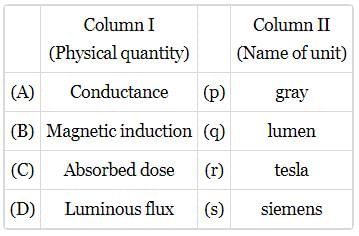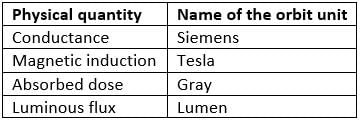Test: The International System of Units (NCERT) - NEET MCQ
20 Questions MCQ Test - Test: The International System of Units (NCERT)
In International System of units, there are seven base quantities whose units are defined. Which physical quantity has a prefix with its unit?
The wrong unit conversion among the following is
Which of the following physical quantities has same unit in all the three system of units?
Which of the following is not the name of a fundamental physical quantity?
Which one of the following physical quantities is not a fundamental quantity?
Which one of the following statements is incorrect?
Which one of the following is not a unit of British system of units?
Which of the following is not a unit of time?
Which one of the following is not a derived unit?
Which of the following units is not a base unit?
Which of the following system of units is not based on unit of mass, length and time?
In which year SI system of units was developed and recommended by General Conference on Weights and Measures?
Which of the following is unitless quantity?
Match the Column I with Column II.

The SI unit of pressure gradient is
The relative density of lead is 11.3. Its density in SI unit is
The value of universal gravitational constant G = 6.67 × 10−11 N m2 kg−2. The value of G in units of g−1 cm3 s−2 is
If the value of atmospheric pressure is 106 dyne cm−2, its value in SI units is
The solid angle subtended by the periphery of an area 1 cm2 at a point situated symmetrically at a distance of 5 cm from the area is

















